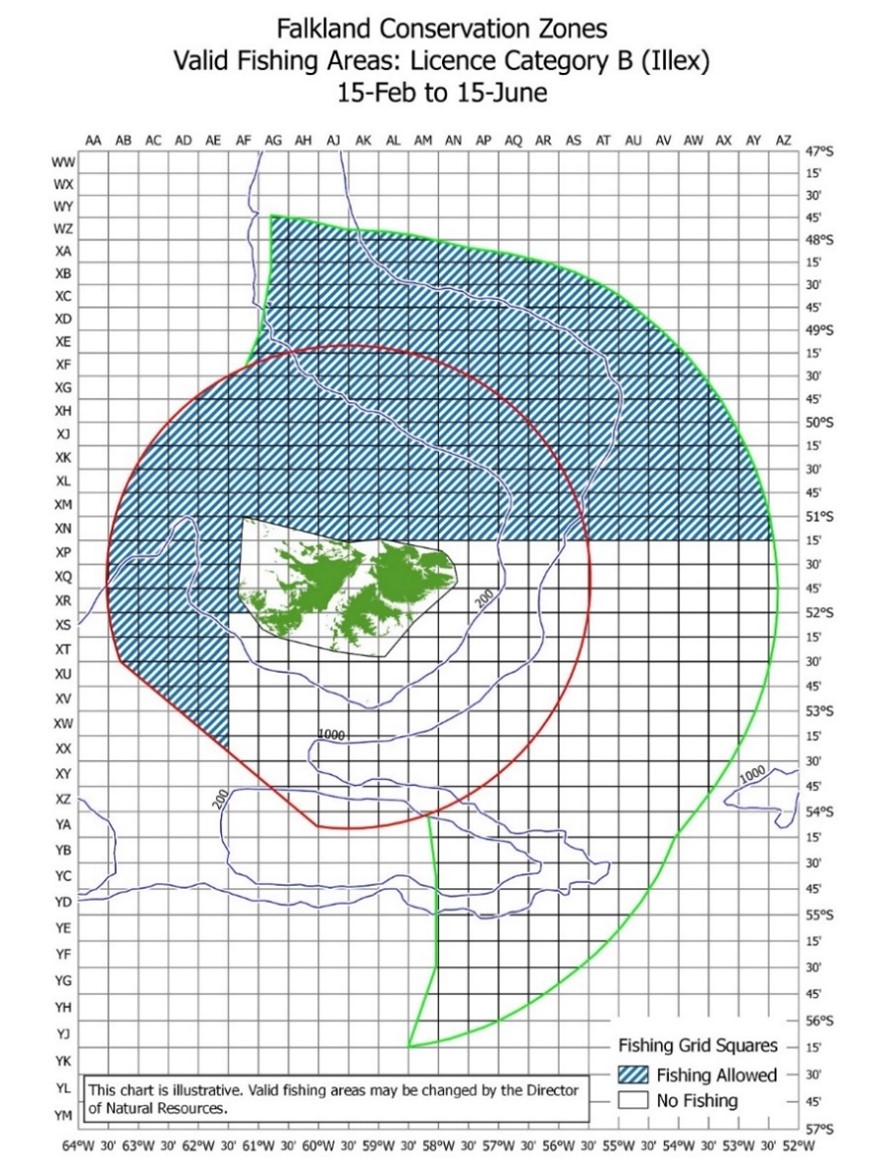●Basic fishery information
| Unit of Assessment | Description |
| Target Species (Common name and scientific name) | Argentine shortfin squid (Illex argentinus) |
| Fishery location | Southwest Atlantic Oceans and the Falkland Islands’ valid fishing zone: licence category B for illex |
| Gear type | Jigging |
| Catch quantity (weight) | 2020: 28,337 tons 2021: 70,459 tons |
| Vessel type and size | Large distant water squid-jigging vessels |
| Number of registered vessels | 83 |
| Management authority | Taiwan Fisheries Agency; Falkland Islands Fisheries Department |
The main fishing ground of the Southwest Atlantic Argentine shortfin squid fishery is located in waters between Brazil Current and Falkland Current. While the fishery targets Argentine shortfin squid (Illex argentinus), it often bycatches few Sevenstar flying squid (Martialia hyadesi). In general, from early December to mid-August is the fishing season. Argentine shortfin squid can be found gathering in waters between 45~46 degrees south in January and February and the stock will gradually move southeast to the Falkland Islands’ Exclusive Economic Zone (EEZ). In May and June, the stock will slowly move northwest to waters outside the Falkland Islands’ EEZ. The operation model of the UoA vessels follows the migration of this target species; that is, the UoA vessels depart Taiwan around December/January to the fishing ground in the Southwest Atlantic Ocean and conduct fishing activities in the allowed areas (Figure 1) promulgated by the Falkland Islands and small area of high seas nearby from February to June, and is subject to adjust considering vessel operation and fishing condition. Normally, vessels participating in the fishery will leave the fishing ground in May or June and arrive at Taiwan in June or July.

Figure 1. Fishing area allowed by the Falkland Islands
While there are various fishing methods to capture squids or cephalopods, including handline fishing, trolling, trawling and drift gillnets, these UoA vessels use automatic squid-jigging machines to harvest squid, which utilizes the diel vertical migration of squids and their phototaxis-positive characteristic. Such fishing gear is mainly used by large vessels. In general, a sea anchor is installed at the stern of the vessel, a spanker at the bow, and a low of fishing lights and automatic squid-jigging machines at the starboard and port side. The squid-jigging operation takes place after sun set, where the vessel master will have the vessel’s main engine stalled. The sea anchor will then be tossed into sea, the spanker will be set to stabilize the hull, and the fishing lights will be turned on to gather squids. When a great number of squids is attracted by the lights and comes close to the vessel at night, the squid-jigging machines will start operating till early morning next day. The automatic squid-jigging machine is composed of a pair of jigging reels, jigging lines, and a control board. The length of the jigging lines is around 200-300 meters, and barbless lures are attached to the line. That is, approximately 12~40 barbless lures are on one fishing line. The fishing lines are tossed along the rollers that are fixed on the bulwark into seas, attracting squids to the lures. Squids that are attracted to the lures and get hooked will then fall off the barbless lures onto a steel frame covered with wire mesh netting as the fishing lines are hulled.
The Argentine shortfin squid Fishery in Southwest Atlantic Oceans was once managed by the South Atlantic Fisheries Commission (SAFC), which is a bilateral commission established by the United Kingdom and Argentina. The Commission used to conduct scientific researches based on the information provided by its members, and set a catch limit of the squid based on the assessment result. However, relevant joint scientific research projects came to a halt after Argentina’s withdrawal from the Commission, making it no longer possible to obtain basic scientific information of the species to form a management decision. This fishery therefore is not managed by any international organization.
